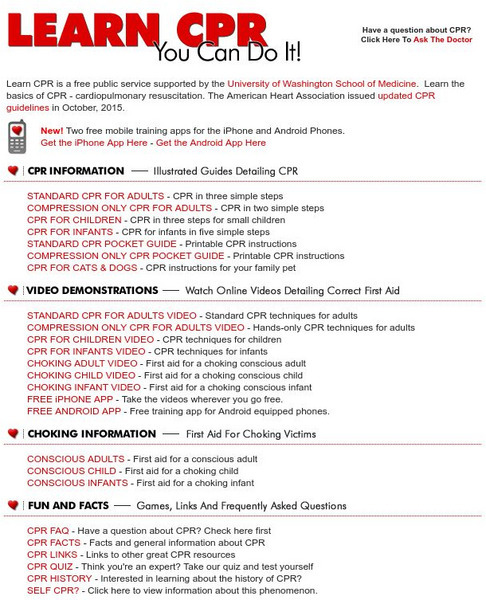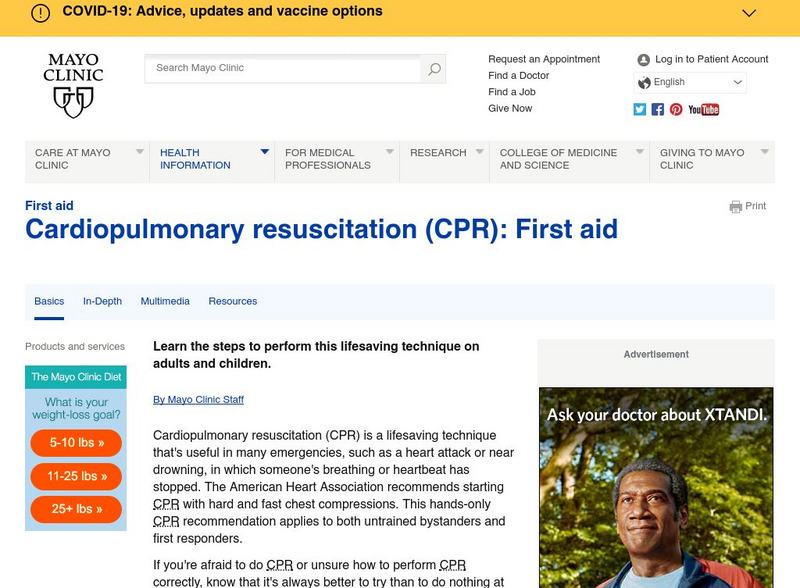University of Washington
University of Washington: Learn Cpr: You Can Do It!
Learn the basics of CPR, watch video demonstrations, and access CPR fact sheets, games, and quizzes. Also includes information about first aid for choking.
American Heart Association
American Heart Association: What Is Cpr: Cpr Statistics
Learn CPR statistics, why CPR is important and who it can help with the fact sheet. A link to a how-to video is included in the article.
American Heart Association
American Heart Association: Be the Beat!
The American Heart Association wants to help create a new generation of life savers - teens who know how to perform CPR and use AEDs (Automated External Defibrillators) to save lives. Be The Beat! teaches teens about heart health and...
Mayo Clinic
Mayo Clinic: Cardiopulmonary Resuscitation (Cpr)
Find detailed notes on CPR. Includes information on the function of rescue breathing and chest compressions and steps for performing CPR on adults and on infants.
Other
Less Stress Instructional Services: Cpr Training and Other Safety Courses
This site has information on taking courses in CPR and other types of safety.
Curated OER
Kids Health: Cpr
At this website find answers to the following questions: "What Is CPR?" and "When is CPR Needed?" Learn the three basic parts of CPR (airway, breathing, and circulation), and learn about opportunities to take CPR courses.
Curated OER
Kids Health: Cpr: A Real Lifesaver
Learn how artificial respiration can help save a life. This website includes definitions terms "artificial respiration," "rescue breathing," and "chest compressions" and lists the emergency situations that would require someone to use...
American Heart Association
American Heart Association: Cpra and Ecc: Cardiopulmonary Resuscitation
Learn facts and statistics about cardiopulmonary resuscitation as well as techniques for administering CPR to adults and children. Includes a link to training information for those interested in learning CPR.
PE Central
Pe Central: Swimming Survivor Challenge Iii
After learning CPR steps and viewing a CPR demonstration, students organized into "tribes" are asked to apply their first aid and CPR skills in a hypothetical situation.









